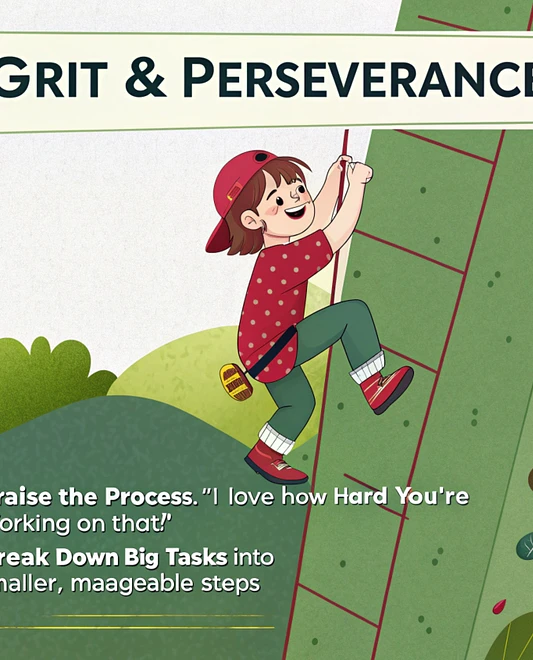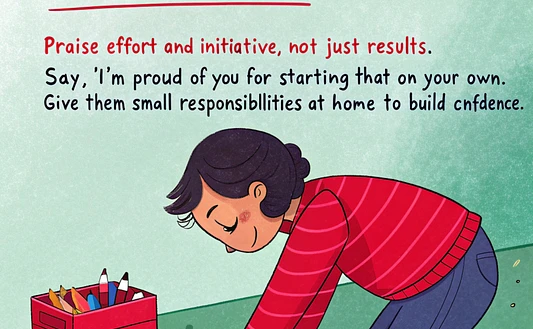Beyond ABCs: Equipping Your Child for Life with 21st Century Skills Flashcards
Beyond ABCs: Equipping Your Child for Life with 21st Century Skills Flashcards
In an ever-changing world where success is defined by more than just academic scores, parents and educators are asking a crucial question: How do we prepare our children for a future we can't even predict? The answer lies not in what they learn, but in how they learn. While foundational knowledge is important, it's the development of core competencies like critical thinking, collaboration, and adaptability that will truly set them up for success. This is where a powerful, yet often underestimated, tool comes into play: educational flashcards.
But we're not talking about flashcards for rote memorization. The future belongs to 21st Century Skills Flashcards—a dynamic learning tool designed to teach the essential life skills every child needs to thrive in college, career, and civic life . This guide will explore the "why" and "how" behind using these innovative flashcards to build your child's future-ready foundation.
What Are 21st Century Skills? More Than Just a Buzzword
The concept of "21st century skills" isn't new—skills like critical thinking and collaboration have been valued for decades. However, as the demands of our global economy and digital landscape rise, their importance has moved to the forefront of education . These skills go beyond traditional subject knowledge to include the abilities, attitudes, and literacies required to navigate complex challenges, work effectively with others, and manage one's own learning and life.
One of the most established frameworks, designed by the Partnership for 21st Century Skills (P21), categorizes these essential competencies into three key areas :
-
Learning Skills (The Four C's): This is the core of how students process information and apply it. It includes:
-
Critical Thinking: Finding solutions to problems and analyzing information.
-
Creativity: Thinking outside the box and generating innovative ideas.
-
Collaboration: Working effectively with others to achieve a common goal.
-
Communication: Conveying ideas clearly and effectively across various formats.
-
-
Life Skills (FLIPS): These are the personal qualities that guide a child's approach to life and work.
-
Flexibility: Adapting to change and showing a willingness to learn.
-
Leadership: Guiding and inspiring others, even from within a group.
-
Initiative: Taking action and starting projects without external prompting.
-
Productivity: Maintaining focus and efficiency to achieve goals.
-
Social Skills: Building positive relationships and networking effectively.
-
-
Literacy Skills (IMT): These skills are crucial for navigating the information age.
-
Information Literacy: Understanding facts, figures, and data, and discerning credible information from misinformation.
-
Media Literacy: Identifying the methods and outlets of credible publishing.
-
Technology Literacy: Understanding and effectively using digital tools.
-
The Science of Learning: Why Flashcards Are an Effective Educational Tool
You might wonder, "Are flashcards just for memorizing vocabulary?" While they excel at that, modern flashcard use is backed by learning science. Flashcards are powerful because they promote active recall—the process of actively retrieving a memory. This act of retrieving information strengthens neural pathways, making it easier to recall that information in the future, moving it from short-term to long-term memory .
Furthermore, research has shown that when flashcards are designed correctly, they can be used for more complex tasks than just rote memorization. For example, studies with college students found that a method called "Flashcards-Plus," which required students to define terms in their own words and generate personal examples, led to deeper levels of processing, such as comprehension and application, and resulted in higher exam scores . This principle applies perfectly to teaching abstract life skills through relatable scenarios and questions.
From Passive to Playful: Making 21st Century Skills Flashcards Fun & Effective
The key to success with any educational tool for children is to make learning feel like play. Ditching the "drill and kill" method is essential, especially for young learners. The National Association for the Education of Young Children (NAEYC) emphasizes that for toddlers and young children, complex language and meaningful interactions are far more important for literacy and development than rote memorization .
Here are 5 engaging activities to bring your 21st Century Skills Flashcards to life:
-
"What Would You Do?" Scenario Game: Pull a card like "Problem Solving" or "Empathy." Present a simple, relatable scenario. For example, "Your friend is crying because their block tower fell down. What would you do?" This encourages critical thinking and applies the skill to a real-world context.
-
Skill-Based Charades: Have your child pick a flashcard, such as "Collaboration" or "Leadership," and act it out without words. This physicalizes the concept and helps solidify its meaning in a fun, memorable way.
-
Move Around the Room: Have your child stand across the room. Hold up a flashcard and ask a question about the skill. With each thoughtful answer or idea, they get to take a step toward you. End with a celebratory high-five! This combines movement with learning, perfect for active children .
-
The "Skill of the Day": In the morning, have your child pick one flashcard from a hat. That skill becomes the focus for the day. Look for examples of it in books you read, movies you watch, and interactions you have, reinforcing the learning all day long .
-
Storytelling Spin: Choose a card like "Creativity" or "Communication." Start a story that incorporates that skill, then have your child add the next sentence. Take turns building a wild, imaginative tale together. This builds narrative skills while exploring the core concept.
A Parent's Guide: Using Flashcards with Different Age Groups
Your approach should adapt to your child's developmental stage. Here’s a quick guide:
-
Ages 3-5: Keep it Simple and Concrete. Focus on one or two skills at a time during short, 5-10 minute sessions. Use simple language—"Teamwork means we work together." Connect the skills to their immediate experiences, like sharing toys or listening to a friend. The goal is exposure and building vocabulary, not mastery .
-
Ages 6-8: Develop Complexity and Connection. You can now combine skills in discussions. For a "Critical Thinking" card, ask "how" and "why" questions. Introduce real-world applications and encourage self-reflection by asking, "What's a time you showed perseverance?" This age group is ready for more nuanced conversations about feelings and consequences.
The SEO Corner: Finding the Right Keywords for Your Educational Content
To ensure this vital information reaches the parents and educators who need it, it's important to understand the language they use in their online searches. This is where keyword research comes in—it's the process of finding out what your target audience is searching for and helping them find your content .


